 W
WThe Turkish War of Independence was a series of military campaigns waged by the Turkish National Movement after parts of the Ottoman Empire were occupied and partitioned following its defeat in World War I. The campaigns were directed against Greece in the west, Armenia in the east, France in the south, monarchists and separatists in various cities, and Britain and Italy in Constantinople. Simultaneously, the Turkish nationalist movement carried out massacres and deportations in order to eliminate native Christian populations—a continuation of the Armenian genocide and other ethnic cleansing operations during World War I. These campaigns resulted in the creation of the Republic of Turkey.
 W
WThis chronology of the Turkish War of Independence is a timeline of events during the Turkish War of Independence (1919–1923). The timeline also includes the background events starting with the end of the First World War. The events are classified according to the campaigns and parties involved. Pictures are included for the significant events.
 W
WThe first parliament of Turkey existed from 23 April 1920 to 11 August 1923. This parliament existed before the Republic of Turkey was proclaimed.
 W
WThe 2nd cabinet of executive ministers of Turkey was the second government formed by the nationalists during the Turkish War of Independence. The Republic was not yet proclaimed and the government was called İcra vekilleri heyeti
 W
WThe 3rd cabinet of executive ministers of Turkey was the third government formed by the nationalists during the Turkish War of Independence. The Republic was not yet proclaimed and the government was called İcra vekilleri heyeti
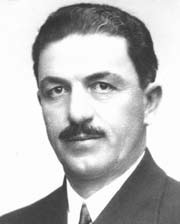 W
WThe 4th cabinet of executive ministers of Turkey was the fourth government formed by the nationalists during the Turkish War of Independence. The Republic was not yet proclaimed and the government was called İcra vekilleri heyeti
 W
WThe abolition of the Ottoman Sultanate by the Grand National Assembly of Turkey on 1 November 1922 ended the Ottoman Empire, which had lasted since 1299. On 11 November 1922, at the Conference of Lausanne, the sovereignty of the Grand National Assembly exercised by the Government in Angora over Turkey was recognized. The last sultan, Mehmed VI, departed the Ottoman capital, Constantinople, on 17 November 1922. The legal position was solidified with the signing of the Treaty of Lausanne on 24 July 1923. In March 1924, the Caliphate was abolished, marking the end of Ottoman influence.
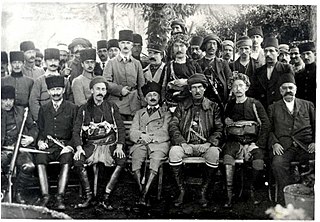 W
WThe Alaşehir Congress was a local assembly of the Turkish National Movement held in the town of Alaşehir from 16 to 25 September 1919.
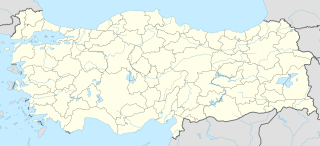 W
WAlemdar, aka Gazi Alemdar, was a former Turkish salvage tug, which is best known for her victorious engagement with a French navy warship during the Turkish War of Independence. Built in 1898 in Denmark, the Danish-flagged vessel was seized by the Ottoman Empire during World War I. She served under Turkish flag until her scrapping in 1982. Since 2008, a replica of her serves as a museum ship at the port of Karadeniz Ereğli, Turkey.
 W
WAmasya Circular was a joint circular issued on 22 June 1919 in Amasya, Sivas Vilayet by Fahri Yaver-i Hazret-i Şehriyari Mirliva Mustafa Kemal Atatürk, Rauf Orbay, Miralay Refet Bele and Mirliva Ali Fuat Cebesoy. And during the whole meeting, Ferik Cemal Mersinli and Mirliva Kâzım Karabekir were consulted with telegraphs.
 W
WThe Atatürk's House, also known as Great Offensive Headquarters, is a historic house museum in Şuhut district of Afyonkarahisar Province, Turkey, which was used as temporary headquarters by then Commander-in-Chief Mustafa Kemal Pasha (Atatürk) right before the Great Offensive in August 1922. The museum was established in 2004 following restorations.
 W
WOttoman Armenian casualties refers to the number of deaths of Ottoman Armenians between 1914 and 1923, during which the Armenian genocide occurred. Most estimates of related Armenian deaths between 1915 and 1918 range from 1.2 to 1.5 million.
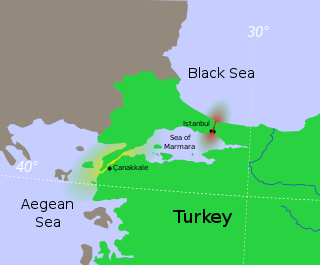 W
WThe Chanak Crisis, also called the Chanak Affair and the Chanak Incident, was a war scare in September 1922 between the United Kingdom and Turkey. Chanak refers to Çanakkale, a city on the Anatolian side of the Dardanelles Strait. The crisis was caused by Turkish efforts to push the Greek armies out of Turkey and restore Turkish rule in the Allied-occupied territories, primarily in Constantinople and Eastern Thrace. Turkish troops marched against British and French positions in the Dardanelles neutral zone. For a time, war between Britain and Turkey seemed possible, but Canada refused to agree as did France and Italy. British public opinion did not want a war. The British military did not either, and the top general on the scene, Sir Charles Harington, refused to relay an ultimatum to the Turks because he counted on a negotiated settlement. The Conservatives in Britain's coalition government refused to follow Liberal Prime Minister David Lloyd George, who with Winston Churchill was calling for war.
 W
WThe Commander-in-Chief National Historic Park is a historic site of national historic significance associated with the Turkish War of Independence comprising the battleground of the last battle in the Greco-Turkish War (1919–22).
 W
WCommittee of Representation was the executive branch of Turkish nationalists before the opening of Turkish Grand Assembly in the 1919–1920 period.
 W
WErzurum Congress was an assembly of Turkish Revolutionaries held from 23 July to 4 August 1919 in the city of Erzurum, in eastern Turkey, in accordance with the previously issued Amasya Circular. The congress united delegates from six eastern provinces (vilayets) of the Ottoman Empire, many parts of which were under Allied occupation at the time. The congress played a fundamental role in shaping the national identity of modern Turkey.
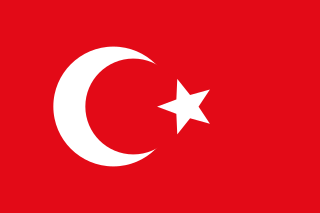 W
WThe Government of the Grand National Assembly, commonly known as the Ankara Government, was the name given to the provisional and revolutionary Turkish government based in Ankara during the Turkish War of Independence (1919–1923) and during the final years of the Ottoman Empire. It was led by the Turkish National Movement, as opposed to the crumbling Constantinople Government, which was led by the Ottoman Sultan.
 W
WThe Greek genocide or ethnic cleansing of Ottoman Greeks, including the Pontic genocide, was the systematic killing of the Christian Ottoman Greek population of Anatolia which was carried out during World War I and its aftermath (1914–1922) on the basis of their religion and ethnicity. It was instigated by the government of the Ottoman Empire and the Turkish national movement against the indigenous Greek population of the Empire and included massacres, forced deportations involving death marches, expulsions, summary execution, and the destruction of Eastern Orthodox cultural, historical, and religious monuments. Several hundred thousand Ottoman Greeks died during this period. Most of the refugees and survivors fled to Greece. Some, especially those in Eastern provinces, took refuge in the neighbouring Russian Empire.
 W
WKahramanmaraş Liberation Museum is a museum of miniature figures in Kahramanmaraş, Turkey.
 W
WThe Kingdom of Kurdistan was a short-lived state proclaimed in the city of Sulaymaniyah following the collapse of the Ottoman Empire. Officially, the territory involved was under the jurisdiction of the British Mandate of Mesopotamia.
 W
WKuvâ-yi Seyyâre was a force of Circassian and Abkhazian volunteers led by Ethem Dipsheu against the invasion forces during the Turkish War of Independence. The group saw themselves as a police force to fight against those who cause disturbance to the greater good of Anatolia. It was a branch of the Kuva-yi Milliye. In time, as Ethem's Islamic Socialist views grew larger, it distanced itself from Kemal Atatürk's Turkish National movement and eventually opposed it.
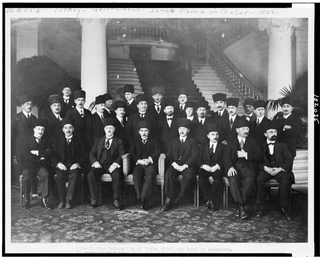 W
WThe Conference of Lausanne was a conference held in Lausanne, Switzerland, during 1922 and 1923. Its purpose was the negotiation of a treaty to replace the Treaty of Sèvres, which, under the new government of Mustafa Kemal Atatürk was no longer recognized by Turkey.
 W
WMedia during the Turkish War of Independence refers to the political attitudes of newspapers and magazines that were published in Anatolia and Constantinople during the Turkish War of Independence between the Armistice of Mudros (1919) and the Treaty of Lausanne (1923).
 W
WMedal of Independence was a special military decoration issued in limited number by Grand National Assembly of Turkey in accordance with the Act 66 of November 29, 1920. It was awarded to military personnel and civilians, who had made important contributions to the country during the Turkish War of Independence. Also upon the flags of all the regiments of the Turkish National Forces, which took part in the campaigns during the occupation of Izmir between May 15, 1919 and September 9, 1922, were bestowed a medal.
 W
WMehmetçik Monument is a monumental sculpture featuring a Turkish soldier on Kartaltepe of Polatlı, a rural area of Ankara Province, Turkey. The name of the monument Mehmetçik is the diminutive form of the common name Mehmet, which is used to nickname Turkish soldiers.
 W
WMisak-ı Millî is the set of six decisions made by the last term of the Ottoman Parliament. Parliament met on 28 January 1920 and published their decisions on 12 February 1920.
 W
WThe Monument of Sivrihisar Airplane is a monument featuring a biplane replica in Sivrihisar district of Eskişehir Province, Turkey to commemorate the purchase of a military aircraft by the citizens of Sivrihisar, and its donation to the Turkish military during the Turkish War of Independence.
 W
WMuseum of Independence is a history museum in Odunpazarı, Eskişehir, Turkey. Established in 2016, it is dedicated to the Turkish War of Independence.
 W
WThe occupation of Constantinople, the capital of the Ottoman Empire, by British, French, Italian, and Greek forces, took place in accordance with the Armistice of Mudros, which ended Ottoman participation in the First World War. The first French troops entered the city on November 12, 1918, followed by British troops the next day. The Italian troops landed in Galata on February 7, 1919.
 W
WThe Republic of Pontus was a proposed Pontic Greek state on the southern coast of the Black Sea. Its territory would have encompassed much of historical Pontus and today forms part of Turkey's Black Sea Region. The proposed state was discussed at the Paris Peace Conference of 1919, but the Greek government of Eleftherios Venizelos feared the precarious position of such a state and so it was included instead in the larger proposed state of Wilsonian Armenia. Ultimately, however, neither state came into existence and the Pontic Greek population was expelled from Turkey after 1922 and resettled in the Soviet Union or in Greek Macedonia. This state of affairs was later formally recognized as part of the population exchange between Greece and Turkey in 1923. In modern Greek political circles, the exchange is seen as inextricable from the contemporaneous Greek genocide.
 W
WThe Provisional National Government of the Southwestern Caucasus, Provisional National Government of South West Caucasia or Kars Republic was a short-lived nominally-independent provisional government based in Kars, northeastern Turkey. Born in the wake of the Armistice of Mudros that ended World War I in the Middle East, it existed from December 1, 1918 until April 19, 1919, when it was abolished by British High Commissioner Admiral Somerset Arthur Gough-Calthorpe. Some historians consider it to have been a puppet state of the Ottoman Empire.
 W
WRüsumat No. 4 was a former Turkish trawler, which is known for her activities during the Turkish War of Independence.
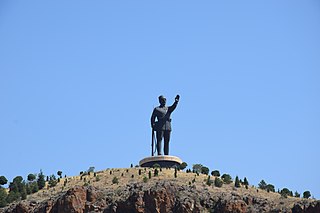 W
WBattle of Sakarya National Historic Park, established on February 8, 2015, is a protected area of national historic significance associated with the Turkish War of Independence comprising the battleground of the Battle of Sakarya in the Greco-Turkish War (1919–22). It is located in the Polatlı and Haymana districts of Ankara Province.
 W
WThe Sayfo or Seyfo, also known as the Assyrian genocide, was the mass slaughter and deportation of Syriac Christians in eastern regions of the Ottoman Empire, and neighbouring regions of Persia, committed by Ottoman troops and some Kurdish tribes during World War I. The Sayfo mostly occurred between June and October 1915, concurrently with and closely related to the Armenian genocide, although it is considered less systematic.
 W
WThe Şehzadebaşı raid occurred on 16 March 1920, around 05:45 when a group of British soldiers raided the Mızıka watchhouse used by Turkish soldiers and police forces Şehzadebaşı, Istanbul and opened fire on Turkish soldiers, who were sleeping. As a result, 4 unarmed Turkish soldiers were killed and 10 others were wounded. At least one of the wounded soldiers later died from wounds.
 W
WThe Sivas Congress was an assembly of the Turkish National Movement held for one week from 4 to 11 September 1919 in the city of Sivas, in central-eastern Turkey, which united delegates from all Anatolian provinces of the Ottoman Empire, defunct at the time in practical terms. At the time of the convention, the state capital (Constantinople) as well as many provincial cities and regions were under occupation by the Allied powers preparing for the partition of the Ottoman Empire. This was part of the wider conflict of the Turkish War of Independence.
 W
WThe Sultanahmet demonstrations were a series of rallies in 1919 held in Istanbul to protest the occupation of the Ottoman Empire following the Armistice of Mudros, especially the occupation of Izmir by Greek forces after the First World War. The largest of the demonstrations took place in Sultanahmet on 23 May 1919, with 200,000 people attending.
 W
WThe Turkish National Movement encompasses the political and military activities of the Turkish revolutionaries that resulted in the creation and shaping of the modern Republic of Turkey, as a consequence of the defeat of the Ottoman Empire in World War I and the subsequent occupation of Constantinople and partitioning of the Ottoman Empire by the Allies under the terms of the Armistice of Mudros. The Ottomans saw the movement as part of an international conspiracy against them. The Turkish revolutionaries rebelled against this partitioning and against the Treaty of Sèvres, signed in 1920 by the Ottoman government, which partitioned portions of Anatolia itself.
 W
WThe Turkish State Cemetery is a national and military cemetery in Ankara, Turkey, containing the graves of the presidents of Turkey and the high-ranked, close companions-in-arms of Mustafa Kemal Atatürk, the founder of the Republic of Turkey, in the Turkish War of Independence.
 W
WTwice A Stranger: How Mass Expulsion Forged Modern Greece and Turkey is a book by Bruce Clark published in 2006 concerning the population exchange between Greece and Turkey which took place in the early 1920s, following the Treaty of Lausanne.
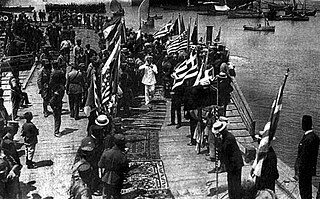 W
WDuring the First World War, Ottoman Empire and United States sided in different sides, but they never officially declared war on each other. However, American ships carried weapons for the Entente during the Gallipoli campaign.
 W
WThe Victory Museum is a national military and war museum in Afyonkarahisar, Turkey, which was used as headquarters by then Commander-in-Chief Mustafa Kemal Pasha (Atatürk), his chief general staff and army commanders before the Great Offensive in August 1922.